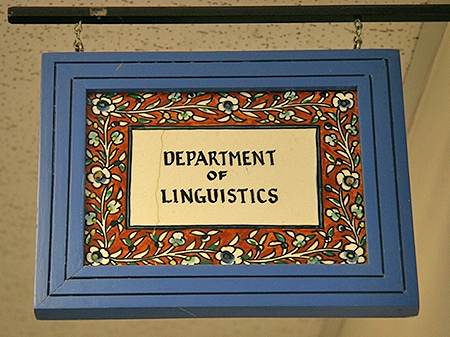
Linguistics ETDs
Publication Date
Fall 11-15-2019
Abstract
This study provides documentation of a variety of aspects of Palikur, an Arawak language family. It addresses the sociolinguistic situation of the language, offers an overview of the grammar and proposes a description of the morphosyntax and semantics of spatial expressions in discourse.
Palikur is an indigenous language of Brazil and French Guiana. While there is no comprehensive reference grammar of the language to date, a recent grammatical sketch by Diana Green et al. (2016, 2019) in the introduction to the newest version of their Palikur dictionary and a pedagogically oriented grammar by Michel Launey (2001, 2003) are available. In addition, there are a number of papers on the language by Harold Green and associates (including Wise and Green (1971), Green and Green (1972), and Dooley and Green (1977) and also Aikhenvald and Green (1998; slightly revised in 2011). The research presented here aims to add to the literature on Palikur by drawing on insights from functional and cognitive approaches to language that stress the importance of sociolinguistic factors in language structure and the central role of social interaction in describing the form of language. Thus, an analysis of the social situation of the language is provided as well as an examination of the use of spatial reference in Palikur discourse.
The study is based on fieldwork conducted in the Uaçá Indigenous Land (Terra Indígena Uaçá, hereafter TI Uaçá) where the Palikur people live in the Brazilian Amazon (the Palikur people also live across the border in French Guiana). Meeting Palikur community members for the first time was in 1991. First visit in their land, TI Uaçá, occurred in 1995 and continuous contacts remained with members of the community over the following 24 years. Visits to TI Uaçá have ranged from two to five months over these years, with the last visit in 2014.
This fieldwork has enabled to offer an ethnographic report on Palikur language use and language attitudes. The discussion includes a review of the results of a sociolinguistic survey of Palikur language, with details on language ideologies and use in the community and the schools.
The fieldwork undertaken in the Palikur community has also allowed conducting an analysis of the forms, meanings and functions of spatial expressions in Palikur discourse, particularly in narratives. The data examined here includes 3 hours and 48 minutes of traditional narratives which were collected from speakers plus 36 minutes of elicitation of narratives in response to the Pear story film (Chafe 1980). Also, 5 hours of traditional narratives collected by Diana Green were examined. Following a grammatical sketch of the language, focusing in particular on those categories relevant to serve as a preamble for the subsequent chapters on the analysis of spatial terms, the study is a description of spatial expressions indexed by their lexical and functional categories: adpositions, verbs, directionals, nouns, interrogatives, and demonstratives. This leads to a discussion of the morphosyntax and semantics of these expressions as they occur embedded in narrative discourse.
A central goal of this study is to provide this resource as a contribution to language maintenance efforts in the Palikur community. The study is also intended to contribute to the literature on language maintenance, typology and spatial expression, and discourse analysis. The particular focus of the data analysis will not only be to fill a gap in the current knowledge and understanding of spatial relations and their conceptualization in the Palikur language but also offer evidence regarding the extent to which researching spatial expressions in natural discourse, that is, discourse produced in conversation and story-telling as opposed to language samples obtained through elicitation, can be useful for expanding our current understanding on this issue of spatial conceptualization.
Language
English
Keywords
Palikur, Arawak, Language Revitalization, Language Documentation, Grammar of Space, Morphosyntax and Semantics, Descriptive Linguistics, Sociolinguistics, Cognitive Linguistics, Spatial Language
Document Type
Dissertation
Degree Name
Linguistics
Level of Degree
Doctoral
Department Name
Department of Linguistics
First Committee Member (Chair)
Melissa Axelrod
Second Committee Member
Sherman Wilcox
Third Committee Member
Larry Gorbet
Fourth Committee Member
Rosa Vallejos Yopan
Fifth Committee Member
Alexandra Y. Aikhenvald
Recommended Citation
Valadares, Simoni M.. "The Palikur Language (Arawak, Amazonian): Sociolinguistics, Grammar Sketch, and the Morphosyntax and Semantics of Spatial Terms." (2019). https://digitalrepository.unm.edu/ling_etds/70
